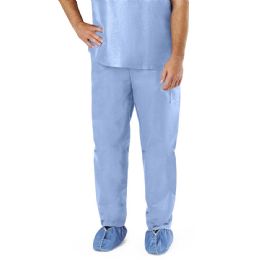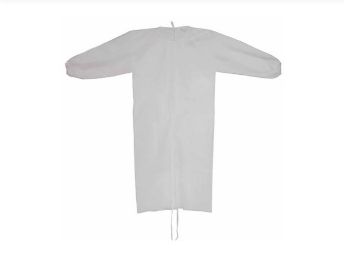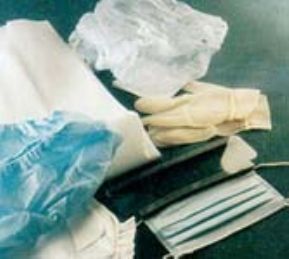



















What is Personal Protective Equipment?
Personal protective equipment, also called PPE, refers to gear, clothing, and other devices that are designed to protect the wearer from environmental hazards. It can also include footwear, helmets, and harnesses. Specially treated or designed clothing, breathing apparatuses, and eye protection are also PPE. Various fields, including athletics, medicine, and manufacturing, have their own specific forms of personal protective equipment. PPE is made to be used during medical procedures, contact sports, and other situations that involve risk of infection, injury, or toxic exposure.
Many occupations require personal protective equipment to keep employees safe from workplace hazards. Laws in the US and many other countries require employers to provide this type of equipment when necessary. In the US, this is regulated by the Occupational Safety and Health Administration, also referred to as OSHA. OSHA has specific PPE requirements for a wide range of workplace conditions, from hospitals to coal mines. For example, medical workers must wear protective clothing and masks when infectious material may be present. To prevent the possible spread of contaminants, often this clothing is made to be destroyed after use. Respirators and filter masks help prevent the accidental inhalation of chemicals, gases, and dust. Hazardous materials (HAZMAT) and radiation suits offer more complete protection for workers in the presence of highly toxic and contagious materials. Protective lenses and goggles can prevent injury to the eye from chemical and liquid hazards and flying fragments.
What is a Bouffant Cap?
A bouffant cap is a hat whose function is to keep stray hairs in and other contaminants out. It resembles a bag with a gathered elastic opening which fits snugly around the hairline and covers the hair. A bouffant cap can be used by the medical profession and in food preparation to keep stray hairs under the cap. They can be available in different materials, such as polypropylene, plastic, or netting, making it a practical solution for a variety of uses. Bouffant surgical caps are normally worn by healthcare workers who need to maintain a sterile environment and cannot risk leaving stray hairs. They can also be used in food preparation to keep hairs from falling into the food.
What is a Surgical Mask?
Healthcare professionals usually wear a surgical mask to avoid transferring bacteria from their mouths to their patients. They can be worn during surgery or when visiting an ill patient. The surgical mask may also protect against fluid splatters from a patient during a procedure or a surgery. It is usually made of synthetic or paper materials which are suitable for one-time uses. Those with an illness can protect others from some exposure by wearing a surgical mask, also.
What are Safety Goggles?
Safety goggles are a type of protective eye wear that normally enclose the eye area to prevent chemicals, water, or particles from getting into the eyes. These goggles are often worn by those who do physical labor in welding shops, sawmills, or factories. Protective eye wear can also be worn by those who do chemical research to protect their eyes in the lab. These are usually required since chemical reactions are often unpredictable and explosions can happen. In a laboratory, fumes can irritate eyes and in this kind of situation, good eyesight may mean the difference between a successful experiment and a disaster.
What is a Disposable Gown?
A disposable gown is a thin gown that ties in the back, or the ties can wrap around the back and tie in the front. It may be made of paper or cotton and can be worn by patients in a hospital setting or by healthcare workers for isolation cases, or in surgery. Doctor’s offices may request that a patient put on a disposable gown before an examination for easier access to the patient. They are also common for a number of outpatient tests and procedures, such as CAT scans, sonograms, or mammograms. Paper or paper/plastic disposable gowns are commonly used in doctor’s offices because if patients have to wear this temporary type for more than a few hours, they may get uncomfortable and cold. The gowns are available in many sizes, fitting everyone from babies to large adults.
How do I Select Personal Protective Equipment?
All personal protective equipment should be made of a safe construction and design, and should be maintained in a reliable and clean fashion. Employers should take the comfort and fit of PPE into consideration when selecting appropriate items for their particular workplace. PPE that is comfortable to wear and fits well will encourage employees to use it. If several different types of PPE are worn together, make sure they are compatible. If personal protective equipment does not fit properly, it can make the difference between being dangerously exposed or safely covered.
OSHA requires that many categories of personal protective equipment meet standards which are developed by the American National Standards Institute (ANSI). Employers who need to provide PPE in the following categories must make certain that any new equipment added meets the ANSI standard. These categories are Eye and Face Protection, Head Protection, and Foot Protection. There is no existing ANSI standard for hand protection for gloves, but OSHA recommends that selection be based on the tasks that are to be performed.
Employers need to make sure each employee can show an understanding of the PPE training. They should also show the ability to properly wear and use PPE before they are allowed to perform the work that requires the use of PPE. If an employer believes that a previously trained employee is not showing the proper understanding and skill level in the use of PPE, they need to receive retraining. Other situations that require additional or retraining include changes in the type of required PPE, or changes in the workplace that make prior training obsolete.
Hulet Smith, OT
Rehabmart Co-Founder & CEO
lb